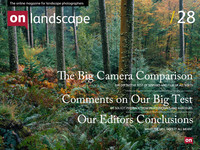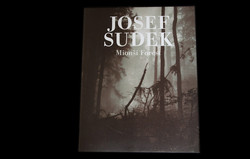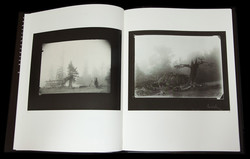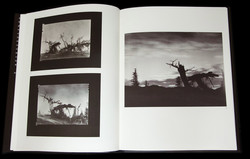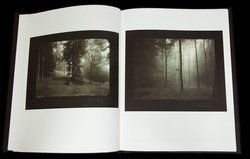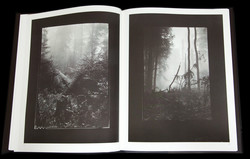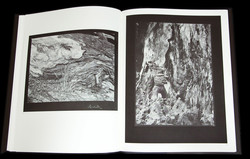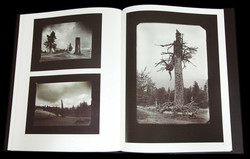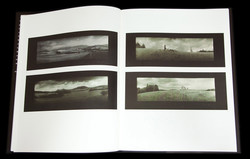Book review
The second book is from the Czech photographer Josef Sudek. Born in 1896 in Kolin, Bohemia, he initially trained as a book-binder before being drafted into the Hungarian Army. Whilst serving on the Italian Front his right arm was severely wounded and eventually had to be amputated. It was during his convalescence in hospital that he first became acquainted with photography, taking pictures of his fellow inmates. He often had to cradle the camera in one hand, using his teeth to compensate for his right arm. Sudek is probably best-known for his striking black and white still lifes; his compositions of drinking glasses, seashells and eggs have become iconic in the history of twentieth century photography.
This book however, details a body of landscape work, dedicated to the Mionší Forest in his home country of Czech Republic. The project spanned over twenty years of Sudek's life and was his final photographic venture before his death in 1976. The series of images remained unpublished during his life-time, largely because he intended on continuing to re-visit the theme. Sixty four of the set are beautifully printed in this book, which also contains two moving tributes from Antonin Dufex, an historian and expert on Sudek, and Peter Helbich, the photographer's best friend who accompanied him on each of his journeys to the Mionší Forest.
His affiliation with the forest came from a fascination with trees, once they had died and shed their leaves. He rarely photographed them for their picturesque qualities, but instead was interested in their statue-like forms, how they appeared like tombstones or totem-poles rising from a devastated landscape. Sudek's dedication to the subject may have originated from his time at war, his respect for the fallen soldiers. His photography immortalizes it's subjects and the trees in this series are portrayed with a similar stillness and monumentality to his still life compositions. The personifying of inanimate objects has been linked to Surrealism, yet I find more connections with the paintings of Cezanne. Sudek seems to employ what the still-life painter called 'the melancholy of the apple': light picking out wrinkles, dents and flaws in the surface of the object.
The earlier images in this book were taken with a 13x18cm camera and the later with a wooden 18x24cm format and a 10x30cm panoramic. Photographs include the original film rebate and are printed to highlight the exceptional level of detail and soft tones of the original contact prints. Every time I return to this book, I appreciate the photographs more and more. His trees gradually take on different identities; to me they seem as much portraits as they are landscapes. Sudek is a master of light and mood, and this book is testimony to that. A very sombre set of images, yet a fascinating insight into a relatively unknown body of work.
The book costs £42.93 and is available from Beyond Words

